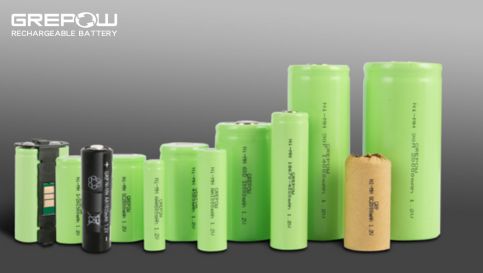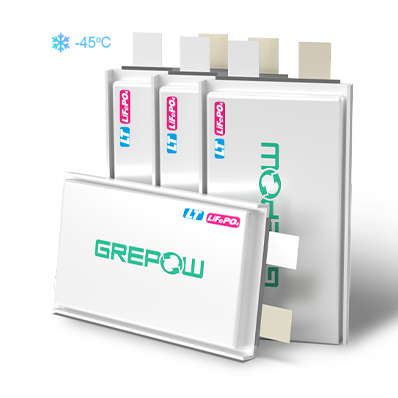How to Choose Lithium Batteries for Cold Weather?
Lithium-ion batteries have become the preferred power source for many devices, from smartphones to electric vehicles and energy storage systems. But as their usage expands, questions arise about their performance in cold environments. This article will delve into key aspects of lithium battery performance in cold weather, how cold temperatures affect them, and how to choose the right lithium battery for winter conditions.
Are Lithium Batteries Good in Cold Weather?
Lithium-ion batteries are generally more efficient and have a longer lifespan compared to other types of batteries, such as lead-acid. While they outperform other chemistries in many aspects, their performance can drop significantly in cold weather if not properly managed.
Cold temperatures can reduce the available capacity of a lithium-ion battery. At temperatures below freezing, the electrolyte within the battery thickens, slowing down the movement of lithium ions between the electrodes, which reduces the battery's overall efficiency.
Despite these challenges, lithium batteries can still be used in cold environments if they are designed with thermal management systems or if appropriate usage and storage guidelines are followed. Selecting a battery specifically engineered for cold weather can mitigate these drawbacks.
What Temperature Is Bad for Lithium Batteries?
Lithium-ion batteries have an optimal operating range between 20°C to 25°C (68°F to 77°F). When temperatures drop below freezing (0°C or 32°F), the battery's performance starts to degrade. In particular:
●0°C to -10°C (32°F to 14°F): Capacity drops moderately, but the battery can still function with reduced performance.
●-10°C to -20°C (14°F to -4°F): The battery’s efficiency is significantly reduced, making it harder to maintain adequate power output.
●Below -20°C (-4°F): The risk of permanent damage increases, and charging in such temperatures can cause irreversible harm to the battery.
In extreme cold, charging becomes particularly problematic, with the potential for metal lithium to form and create short circuits within the battery, leading to safety hazards.
How Does Cold Weather Affect Lithium-Ion Batteries?
Lithium batteries discharge an electric current when the transfer of lithium-ion occurs from the graphite anode (negative electrode) to the cathode (positive electrode). This process slows down in cold weather thus weakening their power. As the temperature drops, the lithium ions will just coat the anode (lithium plating) thus increasing the resistance of the electrolyte and making fewer lithium ions available to cause the flow of electricity. This can reduce 20-30% of the rated battery capacity, although ideally, lithium-ion batteries should operate at 98-95% of the rated capacity. Here are the primary effects:
●Reduced Capacity: The colder the environment, the less power the battery can store or deliver. In freezing conditions, the capacity can drop by up to 50%.
●Increased Internal Resistance: Cold temperatures increase the internal resistance of the battery, which leads to higher energy consumption and reduced efficiency.
●Reduced Charging Efficiency: In cold temperatures, the lithium ions inside the battery move more slowly, resulting in slower and less efficient charging.
●Potential for Damage: If lithium-ion batteries are charged at temperatures below freezing, lithium plating can occur, which can permanently damage the battery and even cause it to fail prematurely.
How to Protect Your Lithium Batteries from Winter Weather?
While lithium batteries are vulnerable to cold temperatures, there are several ways to protect and prolong their life during the winter months:
●Store in a Warm Place: If possible, store the batteries in a warm environment when not in use. Ideally, keep them above 10°C (50°F) to prevent excessive capacity loss.
●Use Insulation: Wrapping batteries in insulated covers or thermal blankets can help maintain a more stable temperature. Some specialized lithium batteries even come with built-in insulation.
●Pre-heat Batteries: Before using or charging in cold weather, it’s a good idea to pre-heat the batteries if they have been exposed to freezing temperatures. You can use a battery warmer or simply bring them indoors for a while.
●Active Thermal Management: Some battery systems designed for harsh environments come with built-in heating elements that automatically warm the battery to an optimal temperature.
How to Charge Lithium Batteries in Cold Weather?
Charging lithium-ion batteries in cold temperatures is more delicate than discharging them. At temperatures below 0°C (32°F), the electrolyte inside the battery thickens, and charging could lead to lithium plating on the anode. This can cause permanent damage and safety issues, including potential short circuits.
Here are best practices for charging lithium batteries in cold weather:
●Warm the Battery Before Charging: If your battery has been exposed to cold temperatures, allow it to warm up to at least 0°C before attempting to charge. A built-in or external heater can help with this process.
●Use Low Charging Current: If you must charge the battery in cold conditions, use a lower charging current to reduce the risk of lithium plating.
●Opt for Cold-Weather Chargers: Some chargers are designed specifically for cold environments and include temperature sensors that can prevent charging if the battery is too cold.
●Monitor Battery Temperature: Using a battery management system (BMS) that includes temperature monitoring can help ensure the battery is not charged when it’s too cold. Some systems will automatically stop the charging process if the temperature is unsafe.
How to Choose Lithium Batteries for Cold Weather?
Some lithium batteries are specifically designed for cold environments and these batteries can maintain performance even in sub-freezing temperatures, which are usually called cold weather batteries. A variety of strategies have been used to keep batteries from getting too cold. Some cold-weather batteries use different materials, others have insulation. These batteries can output steady power in colder temperatures for longer periods of time compared to traditional batteries. When buying batteries for cold weather applications, it’s important to check a battery’s temperature range and intended use. Some will perform much better than others in the cold. Still, these cold weather electrochemical batteries leave room for improvement.

Grepow has developed a series of batteries that can endure temperatures well below freezing without sustaining any permanent damage. Grepow cold weather batteries have been tested between -50 to 80 degrees Celsius, which can continue to function in locations with extreme temperatures, they can also do so for decades. We hope that these power sources will help to address long-standing issues in cold weather technology. Whether you need to power small sensors in some of our planet’s coldest regions or you’re just looking for a durable battery to use in your laboratory, Grepow cold weather batteries could be your solution.
Conclusion
Lithium-ion batteries can function in cold weather, but their performance and longevity depend on careful selection, protection, and usage practices. By understanding how cold temperatures affect these batteries and implementing protective measures, you can ensure reliable performance even in winter conditions. Choose lithium batteries specifically designed or optimized for cold climates, and consider additional protective measures like insulation, thermal management, and temperature monitoring for long-term reliability. If you have any questions or needs, please feel free to contact us at info@grepow.com.
Related Articles
-

What is the impact of long coldness on Agriculture Spraying UAVs Batteries and how to deal with it?
2022-12-12 -

Low Temperature Lithium Batteries Recharge at Minus 20℃
2022-12-01 -

What is T-Box and What battery does T-Box use?
2022-09-09
Related products
-

-40℃ Low Temperature LiFePO4 Battery
-

-50℃ to 50℃ Low Temperature Lipo Battery
-

-40℃ to 60℃ Low Temperature Lipo Battery
















































